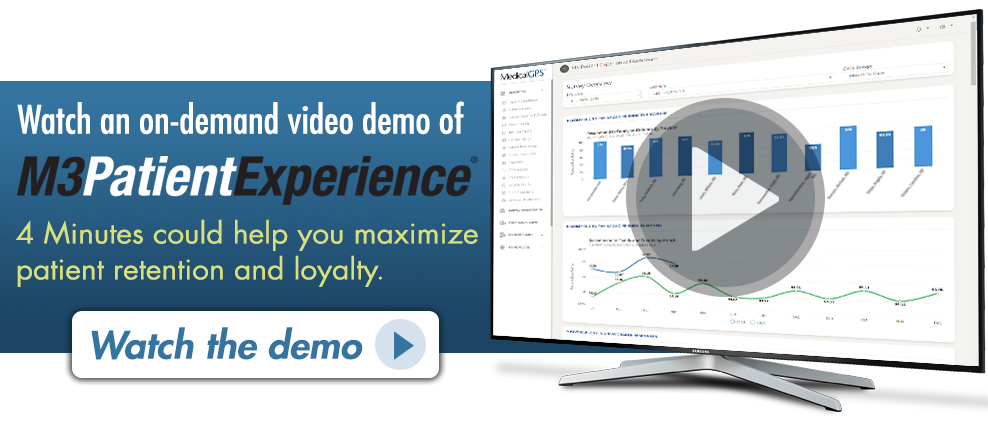 Is patient loyalty fleeting? According to a recent study by Accenture, 61% of patients would change providers to get an appointment more quickly and over half would switch to get an appointment at a more convenient location. It seems that patient loyalty is being tested today more than ever before.
Is patient loyalty fleeting? According to a recent study by Accenture, 61% of patients would change providers to get an appointment more quickly and over half would switch to get an appointment at a more convenient location. It seems that patient loyalty is being tested today more than ever before.
There are many outside influences that can affect the physician-patient relationship, such as changes in insurance, relocations, financial burdens, inattentive office staff, and difficulty getting access. Of course, there are still those patients who will stay with the same provider through thick and thin. However, the unfortunate truth is that these patients have become fewer and farther between. Times have changed, and today’s consumer not only expects excellent quality care, but also speed to access, convenience, information transparency, and personalized service. Practices that can implement strategies that enable them to provide this level of customer service will heighten the patient experience and will be best positioned to increase patient loyalty and outperform their peers.
A few simple strategies to consider –
-
Make it Easy
Speed to access is everything. Simply making it easy for consumers to schedule appointments either online or by telephone is a good start. Providing patients the ability to pay bills, request prescription refills, and access records though an online portal can also be an enormous benefit to a practice and their patients.
-
Make it Convenient
Convenience is king. Forty-six percent of households have both parents working full-time. Therefore, the average family is not always looking for a 9am-5pm healthcare solution, which is why walk-in clinics and urgent care facilities have been making major headway in today’s consumer-driven healthcare market place. Whether it is dedicating an hour every day to seeing walk-ins, or extending hours to include early morning or later evening or weekend appointments, convenience has become a real game-changer for successful physician practices.
-
Make it Clear
Patients can sometimes leave the doctor’s office feeling a little confused. Patient surveys such as CG CAHPS® ask patients if the provider explained things in a way that was easy to understand, and if they provided clear instructions about their health problem or concern. Physicians and their medical staff are under incredible pressure and have very limited time. However, utilizing information sheets, pre-written instructions, or educational materials can be helpful to patients and more efficient for medical staff.
-
Make it Personal
Providing personalized care isn’t just for concierge practices. A personal greeting by name when the patient arrives, a simple question asking about a loved one, pet, or personal hobby, a thank you when they leave, a reminder email for their follow up appointment, or a birthday or Christmas card from the entire staff; these are all simple, effective, and low-cost ways to give patients a meaningful and personal care experience.
-
Make it Measurable
You cannot improve, what you do not measure. Patient feedback surveys can be a valuable resource that compare and assess a practice’s performance. They can also help analyze strengths and weaknesses in patient experiences which can be used to evaluate the effectiveness of improvement initiatives. Most importantly, they can be used to help set higher standards of quality, patient satisfaction, and loyalty within a practice, while supporting a culture of patient-centered care.
What is M3-Patient Experience® and how can it help assist in improving patient loyalty?
M3-Patient Experience is the proprietary patient feedback system developed and deployed by MedicalGPS, LLC. Since 1995 physician practices have used M3-Patient Experience to gauge their patients’ perception of the office experience. The process is simple, yet very powerful. The goal is to acknowledge and express gratitude to every patient immediately following their office visit. Patients are first thanked, and then encouraged to provide feedback relative to their visit – usually the same day or next day following their visit. Patient feedback may be obtained via in-clinic devices, email, and text message.
The M3-Patient Experience® questionnaire is customized by the M3 client and may include up to 13 of the core questions utilized on the CG CAHPS survey instrument. M3-Patient Experience® provides on-going continuous patient feedback relative to important CG CAHPS measures. Because M3-Patient Experience® is real-time, M3 clients have opportunities to; a) perform service recovery soon after the patient’s visit, b) build patient loyalty, and c) create a culture of service excellence, all of which results in positive impact to the patient experience.
Organizations that use M3-Patient Experience® to supplement their CG CAHPS process have on-going intelligence to continuously improve throughout the year. As a result, when the annual CG CAHPS survey is conducted, organizations utilizing M3-Patient Experience® score higher than they would have otherwise, and thereby maximize their reimbursement.

CAHPS® is a registered trademark of the Agency for Healthcare Research and Quality (AHRQ)

